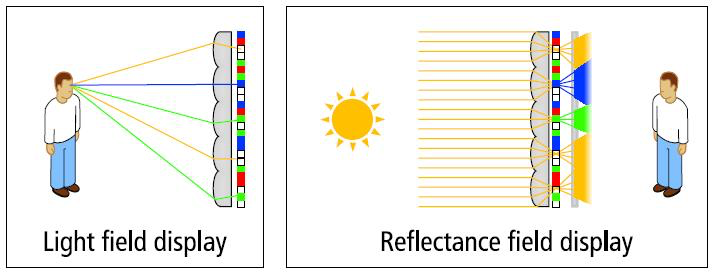CREAL made their second appearance at CES this year, and what they showed was even more impressive than last year. In 2019, the Switzerland -based company showed of their light field displays (LFD) and how they worked. This impressed many and brought them plenty of attention. This year, they brought the same displays and made them incredibly smaller. What screens are smaller than TV and mobile displays? VR headset and AR headset screens.
What CREAL is demoing right now is the best looking display the VR world has seen yet. So why does an LFD work better than anything else, and how does it work? Lets break this down so you can understand the importance of an LFD in a VR or AR headset.
What is an LFD?
A light field display is incurably hard to generate, captures and display. Most VR headsets today use basic stereoscopy and a fixed focal point to make a flat screen look 3D inside of your headset. This works because your eyes are naturally gravitated towards the focused area. If you do look in a different place though, you’ll find unfocused images and some incredibly eye strain waiting for you.
Some companies have tried to fix this by adding the varifocal lenses, a lens that changes its focus on what you are looking at. This is done by eye tracking. This is one of the biggest draws to eye tracking, even though it requires more hardware and software than most companies want to pay for. What CREAL is doing is getting rid of the need for eye tracking.

By producing an LFD, CREAL is able to produce the most life-like image inside of virtual reality. No matter where you look on the display, the image is going to appear in focus and everything else will be out of focus. When you change your direction of focus, the newest part of the image will be in focus. This is done without eye tracking, and is a proper representation of the real world.
If VR wants to be taken to the next level, an LFD inside of your favorite headset will be essential.
Fitting an LFD into AR/VR
At the 2019 CES event, the company brought a big box that would never be used as a something you’d carry with you. That is how they first introduced the LFD to the public. This year, the company showed some real promise of slimming the product down. Their newest models could easily fit into a common VR headset, and possibly a bulkier AR headset.
The problem the company is facing right now is the quality when scaling the product down. In the 2019 version, you can see a wider field of view, a higher quality image, and even a smaller eye box. One solution CREAL is exploring with is not expanding the field of view of the LFD. Instead, they’d surrounding the display with a common LCD display. The edges of the screen are not looked at nearly as much, so cutting a corner there would be acceptable. It also would go unnoticed by millions of possible users.
This would cut down on needed processing power from the headsets power source. If they only cover the direct view of the eye with the LFD, the future could be coming to us sooner rather than later.
VR, Not AR First
As expected, VR headsets will likely get this tech before AR headsets. An LFD inside of AR headsets would be more valuabled, fitting this tech in a slim pair of glasses is still far-fetched.
This also would allow the computing power of this display to be offloaded to a PC or a powerful mobile chip. Many anticipate AR headsets to be considerably weak right now, so giving them the responsibility of operating an LFD would be misplaced confidence.
CREAL doesn’t want to make their own headset, but rather partner with possible hardware producers. They haven’t said which they anticipate will want their tech yet. What they have done though is position themselves perfectly to be inside of any upcoming VR or AR headset. For more VR news and community updates, make sure to check back at VRGear.com